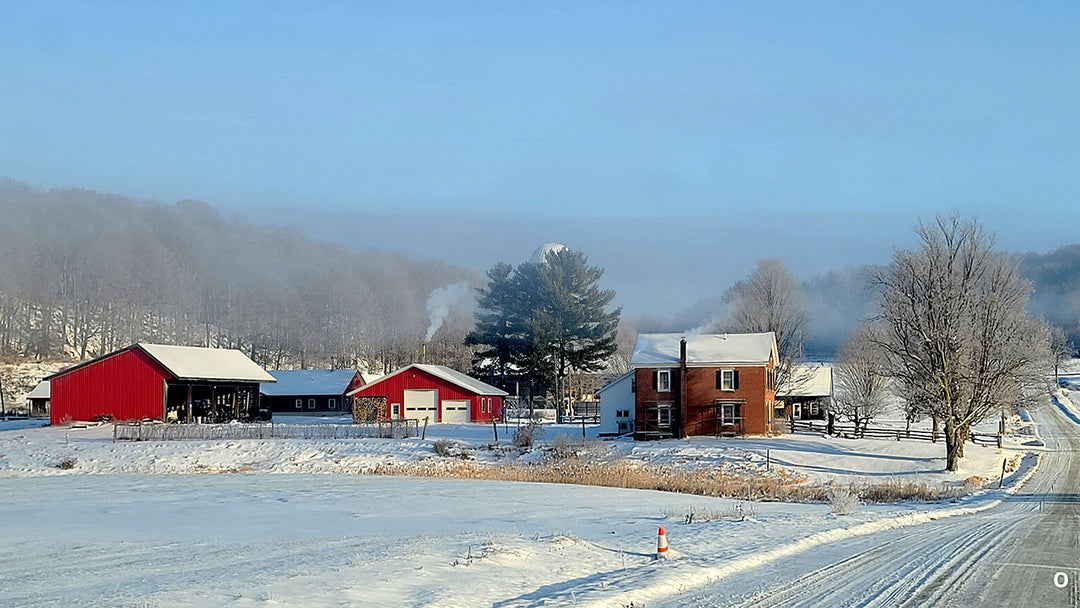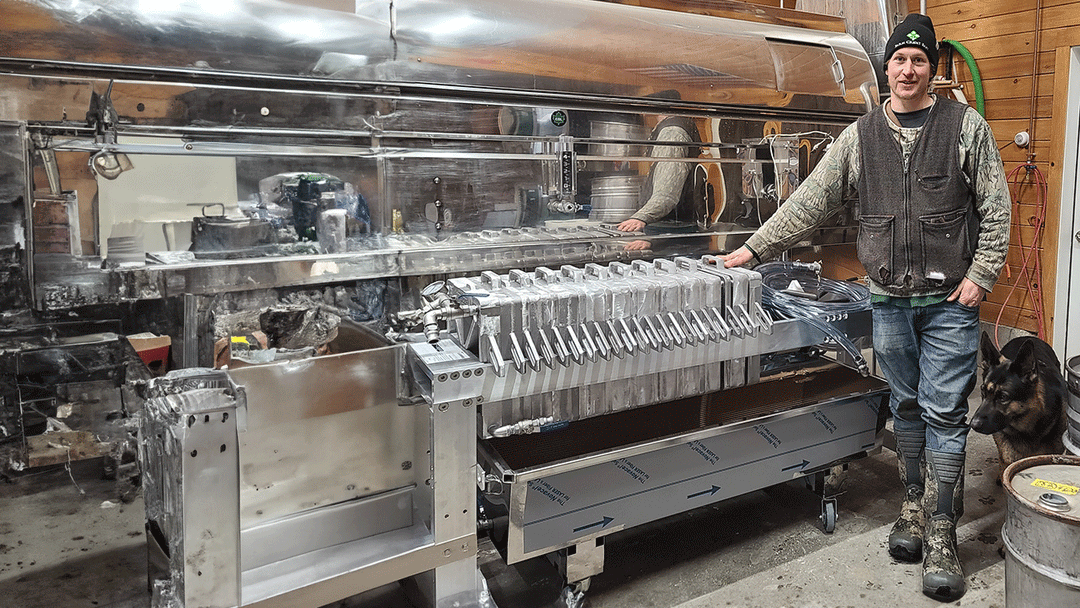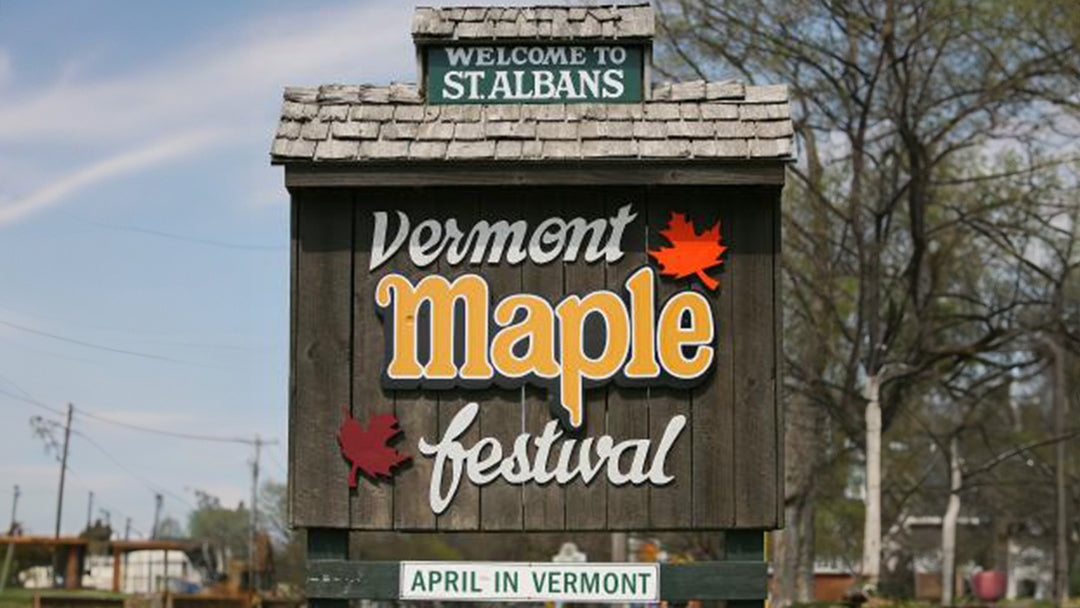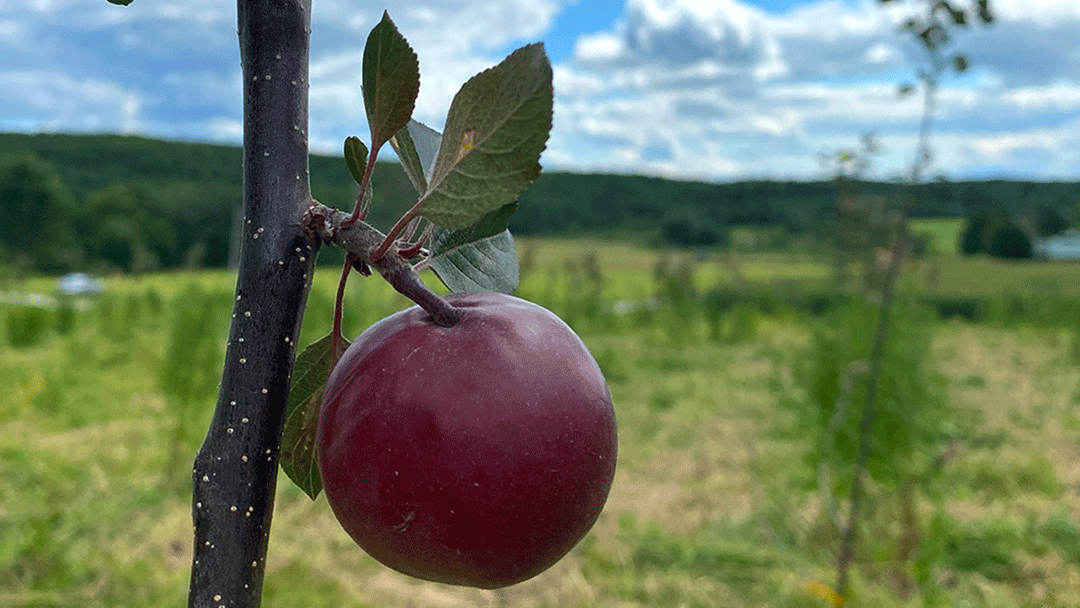Maple Baklava Recipe

Baklava has long been a favorite treat and it only makes sense to add it to our recipe lineup. Flaky phyllo dough, crushed nuts, Vermont maple syrup, butter, what's not to love? In my life, I've had one homemade Baklava that has stood above the rest in my memory, and that's what I'm bringing you today in what I consider the best Baklava recipe.
During my hiatus from the farm, I lived in Germany for a year, circa 2019-2020. At this time my family and I were fortunate enough to live near our former au pair, Edessa, who resides in Heidelberg, Germany. In the course of one visit with her family, her mother, Farha, brought out this beautiful, delicious, walnut and pistachio Baklava. The perfect amount of sweetness balanced with savor, I was blown away.
Farha is originally from the town of Hah, in the region of Tur Abdin in southeast Turkey. Her family recipe has been passed down for generations and she carried the amazing recipe to Germany when the family moved there. I daresay I ate more than I should have in polite company, but it stuck with me for a long time after as the best representation of this delicious dessert.

My mother, Karen, has made Baklava in the past and we've always used maple syrup. When we thought about posting her recipe to the website I thought that it might be cool to shake things up and see if we could get Edessa to share her family's recipe, but with a maple twist. After reaching out to her, she enthusiastically agreed, and we shipped maple syrup across the ocean to Germany so the work could commence.
Edessa mentioned that she was making this recipe with her mom to celebrate her birthday, the following recipe is from her notes as well as the pictures, and from my recollection, it's everything I remembered and more.
How did it taste with maple syrup? I honestly love it, it’s refreshing and not so sweet allowing you to eat more than you normally would.
Where did Baklava originate from?
I was interested in the baklava origin story, so I figured the readers might be as well. It's hard to say exactly where traditional baklava originates from, but the first records indicate the 8th century BCE in Mesopotamia. Since then, the original baklava recipe as we know it today is claimed by almost all the cultures of the Eastern Mediterranean.
Ask a Greek, Turk, Aramean, or Syrian, you're likely to hear an emphatic claim of ownership for the revered dessert. I'm not going to pick a side here, but the best I've ever had was made by Edessa's Aramean family, so I'm a little biased toward them. However, I'll keep an open mind and try everyone's Baklava to make an informed decision! If you have a family recipe and method of making baklava we'd love to have you share it with us.
What is Baklava, and what's in it?
I may have assumed you know about the splendid delicious dessert known as Baklava, but in the event you navigated here by accident, here's an explanation:
Baklava is a sweet pastry that I mentioned earlier originating in the Middle East and is popular throughout the Mediterranean region, including Greece and Turkey. It is made of multiple layers of phyllo dough, which is a thin, flaky pastry. These layers are then filled with chopped nuts, such as pistachios or walnuts, and sweetened with simple syrup or honey, in this case, maple syrup.
One of the key ingredients in baklava is the phyllo dough. This dough is made from flour, water, and a small amount of oil or butter. The dough is then rolled out into thin sheets, which are layered on top of each other to create a light and flaky pastry. This baklava recipe uses frozen phyllo dough, but you can search for great homemade dough recipes if you're feeling ambitious.
In addition to the phyllo dough, baklava is filled with chopped nuts. These nuts are typically pistachios or walnuts, although other nuts can be used as well. The nuts are usually lightly toasted before being added to the pastry, which helps to bring out their natural flavors and aromas. Finally, the pastry is sweetened with syrup or honey, which helps to balance out the flavors of the nuts and the phyllo dough. Overall, baklava is a delicious and decadent pastry that is both savory and sweet!
Vegan Baklava
For those who follow a vegan diet, finding desserts that don't contain animal products can be challenging. Being that maple syrup is a perfect vegan treat, we like to offer conversions to most of our recipes to support our vegan friends. Many desserts contain butter, eggs, milk, or other animal-based ingredients. However, vegan baklava is a delicious and satisfying dessert that can be enjoyed by anyone following this diet.
One of the great things about vegan baklava is that most phyllo dough from the store is already vegan. Phyllo dough is typically made from flour, water, and a small amount of oil, which means that it does not contain any animal products. However, it is important to check the ingredients list on the packaging, just to be sure.
Another way to convert this recipe to a vegan baklava is to substitute the butter with olive oil. A good rule of thumb is to use 75% of the volume of butter called for when substituting with vegetable-based oil. Olive oil can be a great substitute for butter in many recipes, and it works particularly well in baklava.
How to make Baklava: Step-by-Step
To begin, remove your phyllo sheets from the freezer to thaw them at least an hour before starting. It's even better if you can transfer them from the freezer to the refrigerator the night prior and then let them come to room temperature for an hour before assembling.
Moisture helps pliability, you don't want your phyllo sheets cracking and splitting, we recommend covering your phyllo dough with a barely damp towel to prevent them from drying out. We're going to be rolling these up and need them pliable!
Prepare the Maple Syrup
Once you're frozen phyllo dough is properly defrosted, now it's time to prep your syrup mixture. Combine the pre-measured Vermont maple syrup, water, and lemon juice in a small pot and boil for about 15 minutes. Avoid stirring at any point so as not to introduce sugar crystals. This trick will greatly improve the final product's texture and consistency. After 15 minutes or so of boiling, turn the stove to low to keep the mixture warm.

Process your Nut Mixture
If you have whole nuts, use your food processor and reduce your walnuts and pistachios to the size of your liking. For this recipe, we opted for a rough chop on the walnuts, and a fine chop on the pistachios. This is totally up to you in deciding how fine of a crush you'd like.
Instead of a food processor, you can use a plastic bag and hit your whole nuts with a hammer or mallet. At this step, you can choose to add cinnamon if you desire an extra layer of flavor. Maple syrup pairs perfectly with cinnamon.
Layer Phyllo Pastry Sheets with Nuts
In another small pot, melt the butter for brushing on the phyllo sheet. Reserve a little of the butter to grease the baking tray. Olive oil can be substituted in this step for those averse to butter or practicing a vegan diet.

Lay down all the phyllo sheets in a stack, you'll one sheet of phyllo dough for each baklava "roll". Take a brush and spread some of the melted butter on the top edge of your phyllo dough edge, this will act as a "glue" when you roll it up. On the lower part of the phyllo leaf, spread a row of chopped walnuts. At this point, you can begin preheating your oven to 375 degrees F.
Once you've buttered or oiled the upper edge and spread your walnuts, fold your sheet of phyllo over the walnuts to create a pocket of sorts.

Use a 1/2" to 1" dowel or rod and place it lengthwise in front of the pocket of walnuts.

Start rolling the walnut row slowly and carefully over the row of walnuts and continue rolling to the buttered end of the phyllo sheet.

Now you have created your roll on the stick, slowly press in from both ends so it is squeezed together. This is the step where you get nice ridges that look beautiful when browned in the oven.

After pushing the roll together, slide the baklava roll off from the stick and transfer it to your buttered pan. Lining them up side by side as you continue your work.

Ideally, your 9"x13" baking tray is full at this point. Next, you'll brush the remaining butter on top of the rolled up baklava.

What is the secret to crispy baklava?
The butter or oil is a key ingredient and ensures you get a golden brown finish on the top when you remove it from the oven. Place your baklava in the oven and bake for about 25 minutes until they reach the proper color.

Finish with Syrup
Now for what Edessa described as the fun part. Take your maple syrup mixture and pour it on top of the hot baklava. You don't have to be too careful at this step, other than avoid spilling it outside the tray. Any syrup that splashes on the top of your hot baklava will only serve to add a sweet glaze, the rest will soak into the bottom layer of your baklava.
Garnish with Chopped Pistachio Nuts
It's important now to let your cooked baklava sit and cool, absorbing the syrup. This is an important step as you don't want to rush serving it. I find that just warmer than room temperature is my favorite way to eat it. Once it's cooled down and before you're ready to serve it, sprinkle the grounded pistachios on top of the baklava, and voila the tasty baklava is done and ready to eat!

Baklava Ingredients
- 1 1/2 cups of real maple syrup, Amber Rich Taste
- 3/4 cup of water
- 1 tsp of lemon juice
- 2 sticks of butter or 3/4 cup of olive oil for vegan Baklava
- 1 package of phyllo dough
- 1 cup of chopped walnuts
- 1/4 cup of ground pistachios
Baklava Tips
- Undercooking your dough will be obvious by not having a golden brown finish. Leave it in the oven further if you don't achieve this.
- Don't short your maple syrup mixture, not enough syrup will leave your baklava dry.
- Avoid allowing the phyllo sheets to dry out, cover them with a damp towel (not soaked).
- For similar reasons described in our maple cream recipe, don't stir the syrup mixture, otherwise, you'll introduce unwanted sugar crystals that will leave a granular texture.
- Turkish black tea is the perfect accompaniment, and it's what I had with it in Germany.






Marina, My mother mentioned that when she made baklava she always did it with layered phyllo dough as your family does it. As I mentioned in the blog, I had this by chance when visiting with my former au pair’s family in Germany and it was a cool, new way to have baklava. When I was reading about different types of baklava I found that most commercial baklava is dry because it keeps longer, you definitely want to make it yourself or purchase it fresh from a pastry shop. I also saw a few recipes for the shredded phyllo dough that I want to try as well.
Best,
Nathaniel
My mother was born to Lebanese immigrants, a century ago come next January. I have Opinions on traditional diamond-cut baklava, or as it was called in my family, bi’lawi, which may mean ‘layered sweet’ in Arabic.
Most of what I’ve had commercially has been dry, lacking in cinnamon, rose or orange blossom water, or honey, instead of some lesser syrup. Those who used to be Yugoslavians use cashews, on which I will pass. No peanuts, either, thank you. Hazelnuts, maybe.
At Gayle’s Bakery in Capitola CA, they have a sweet called a Crocodile, which is similar in taste (I think) to this recipe. It uses pecans, and it’s folded flat, with cut pieces about 2”x6”. I think of it as Baklava As A Yankee Would Make It.
My sister, before her stroke, made the best baklava in the family, better than our eldest aunt. She does the diamond version.
Yours looks like sooooo much less work! My favorite phyllo is the kind that looks like longer-strand shredded wheat.
Leave a comment